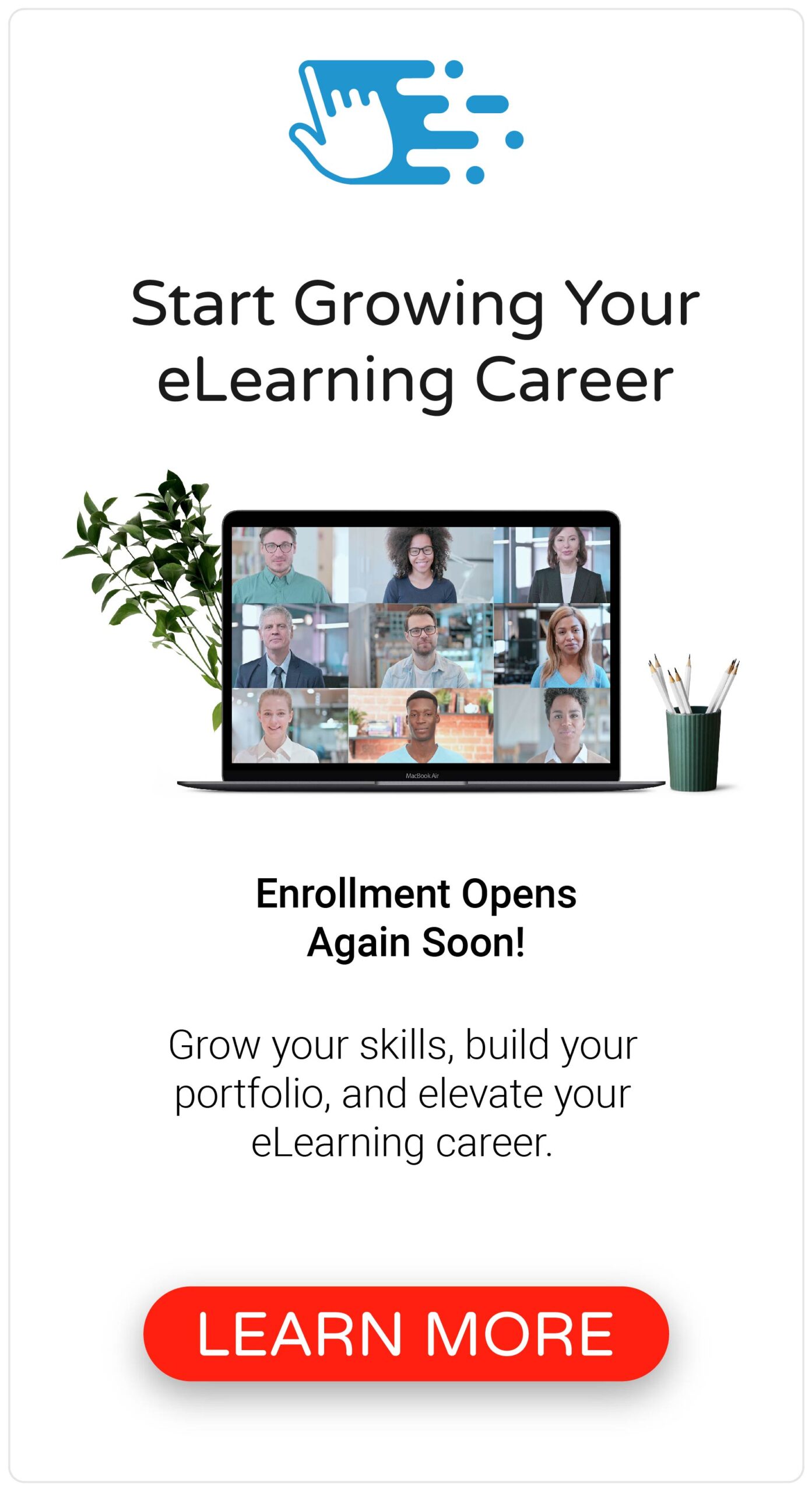As I’ve been working within the eLearning industry over the last 10 years or so, I’ve realized there are some questions about eLearning we should stop asking. And I’m serious! We should take them out back and bury them never to be found again!
What are these “questions about eLearning” I’m talking about? Well, they’re questions that, when asked and answered, usually results in lousy learning experiences and undesirable performance outcomes.
So, here are three questions about eLearning you should stop asking, along with what you should be asking instead.
Should we build an eLearning course or instructor-led training?

Whenever I’m working on any learning project, regardless of the topic, the following question is inevitably asked: “Should we create an eLearning course, or do you think this should be an instructor-led training?”
To be 100% honest, I used to ask this question all the time! Nowadays, when I hear this question, it’s like hearing nails on a chalkboard. You see, I’ve since realized that learning isn’t one thing or another—it’s not a binary choice between eLearning or ILT, a job aid or how-to video. The truth is, learning is a process of experiences, which can and should be as diverse as possible.
Creating an effective training program isn’t a binary choice between one thing or another—eLearning vs. ILT or video vs. a job aid.
So, what questions should you ask instead?
Instead of asking whether the training you’re designing should be an eLearning course or instructor-led training, try asking these questions:
- What would be the best modality for teaching these skills?
- How can we create a blended learning experience for this topic?
- What considerations (i.e., number of learners, location of learners, etc.) might affect the learning experience we might want to create?
What is the recommended length of an eLearning course?

Have you ever wondered or asked (or been asked) how long an eLearning should or shouldn’t be? The simple answer is: yes! This is actually a pervasive question that gets asked all the time. In fact, I remember when the general rule was that an eLearning course should be no more than one hour long! This eventually turned into 30 minutes, then 15 minutes, and now it hovers between five and 10 minutes.
The problem with this question is that it assumes there’s an ideal length for how long learning takes. The truth is, learning takes as long as it needs to take. And as much as it would be convenient to make a one-size-fits-all guideline for eLearning, it always depends on the complexity of the content, the level of masterly you’re looking to achieve through the learning, and how much time your learners can dedicate to the training experience you create.
An eLearning course should be as short or as long as it needs to be to cover the required learning content.
So, what questions should you ask instead?
Instead of asking how long an eLearning course should or shouldn’t be, try asking these questions:
- What level of effort will it take for learners to reach the desired level of performance?
- How much time can learners dedicate to formal training in a single sitting?
- How can we chunk and structure the information to be as effective as possible?
How long should it take to build one hour of eLearning content?

This is another question that is regularly asked and debated within our industry. Usually, you see this question asked by corporate learning executives, desperately trying to timebox and budget for the amount of time it takes their teams to build a course and get on to the next one. And, yes, if you do some Googling, you’ll find all sorts of interesting studies, research, and articles on the topic.
And you want to know what I think? I think most of it is B.S.! Here’s the thing: how long it takes to develop an eLearning course (or any learning) depends on the unique variables you’re currently facing. How complex is the content, and how much of it are you including? How much interactivity are you building into your course? Are you using stock graphics or custom graphics? Will there be audio narration, or will it be a text-based course? What tools are you using to develop the course, and what’s your expertise with these tools? How many people need to review the course, how long will it take them to provide feedback, and how much feedback will they provide?
As you can see, there are a boatload of variables that can affect how long it takes to develop any course of any duration.
How long it takes to develop an eLearning course depends on the unique variables you’re currently facing.
So, what questions should you ask instead?
Instead of asking how long it will take to build an hour of eLearning content, try asking these questions:
- What resources will be required to develop the course by the desired delivery date?
- What constraints (i.e., other projects, vacations, etc.) might affect the delivery of the course?
- How can we adjust the scope of the project (i.e., the amount of content, the complexity of the design, etc.) to help us meet the desired delivery date?
The Bottom Line
The next time you’re tasked with designing and developing any type of learning experience, whether it be eLearning or something else, avoid asking questions that don’t help really help you make informed decisions and good eLearning.
What are some other questions about eLearning we should stop asking? Share them by commenting below!








This is great! Thanks for posting. Another thing I get is people assuming what I can or should do and just handing me an ask. I have to come back and ask a lot of questions. They are usually hesitant to answer questions at first because they feel they know the problem and the answer. After some time, they usually realize there is a lot more involved in problems and solving the problem than what face value demonstrates.
I love that, Philip, and I totally agree! Once you start digging, they realize that it might require them to invest more time in helping solve the problem, rather than handing it off to someone else. Great point!
I remind myself that the project managers generally have no idea of the complexity of variables involved in producing effective learning materials. One must have both a high-level view of the overall tasks and a deeper, detailed understanding of each task, as well as the interconnections between team members. This is not an easy place to be, and throw in some deadlines that seem capricious. A calm approach is my best option. Frequently, I console myself by reminding myself the finished project, of course, will not be perfect, but it can be a lot more effective than the managers envision.